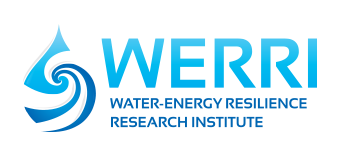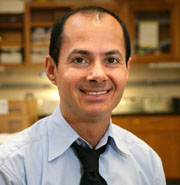Omar M. Yaghi received his B.S. degree from State University of New York-Albany (1985), and Ph.D. from the University of Illinois-Urbana (1990) with Professor Walter G. Klemperer. He was an NSF Postdoctoral Fellow at Harvard University (1990-92) with Professor Richard H. Holm. He has been on the faculties of Arizona State University (1992-98), University of Michigan (1999-2006), and UCLA (2007-2011). He is currently the James and Neeltje Tretter Chair Professor of Chemistry at UC Berkeley, and a Senior Faculty Scientist at Lawrence Berkeley National Laboratory. He is the Founding Director of the Berkeley Global Science Institute. He is also the Co-Director of the Kavli Energy NanoScience Institute, and the California Research Alliance by BASF.
His early accomplishments in the design and synthesis of new materials have been honored by the Solid-State Chemistry Award of the American Chemical Society and Exxon Co. (1998) and the Sacconi Medal of the Italian Chemical Society (2004). His work on hydrogen storage was recognized by Popular Science Magazine which listed him among the ‘Brilliant 10’ scientists and engineers in USA (2006), and the US Department of Energy Hydrogen Program Award for outstanding contributions to hydrogen storage (2007). He was the sole recipient of the Materials Research Society Medal for pioneering work in the theory, design, synthesis and applications of metal-organic frameworks and the AAAS Newcomb Cleveland Prize for the best paper published in Science (2007). He is also the recipient of the American Chemical Society Chemistry of Materials Award (2009), Izatt-Christensen International Award (2009), United Kingdom’s Royal Society of Chemistry Centenary Prize (2010), China Nano Award (2013), King Faisal International Prize in Science (2015), and Mustafa Prize in Nanoscience and Nanotechnology (2015).
His work encompasses the synthesis, structure and properties of inorganic and organic compounds and the design and construction of new crystalline materials. He is widely known for inventing several extensive classes of new materials termed metal-organic frameworks, covalent organic frameworks, and zeolitic imidazolate frameworks. These materials have the highest surface areas known to date, making them useful in clean energy storage and generation. Specifically, applications of his materials are found in the storage and separation of hydrogen, methane, and carbon dioxide, and in clean water production and delivery, supercapacitor devices, proton and electron conductive systems. The building block approach he developed has led to an explosive growth in the creation of new materials having a diversity and multiplicity previously unknown in chemistry. He termed this field ‘Reticular Chemistry’ and defines it as ‘stitching molecular building blocks into extended structures by strong bonds’. He published over 200 articles, which have received an average of over 300 citations per paper. He is among the top five most highly cited chemists worldwide.



